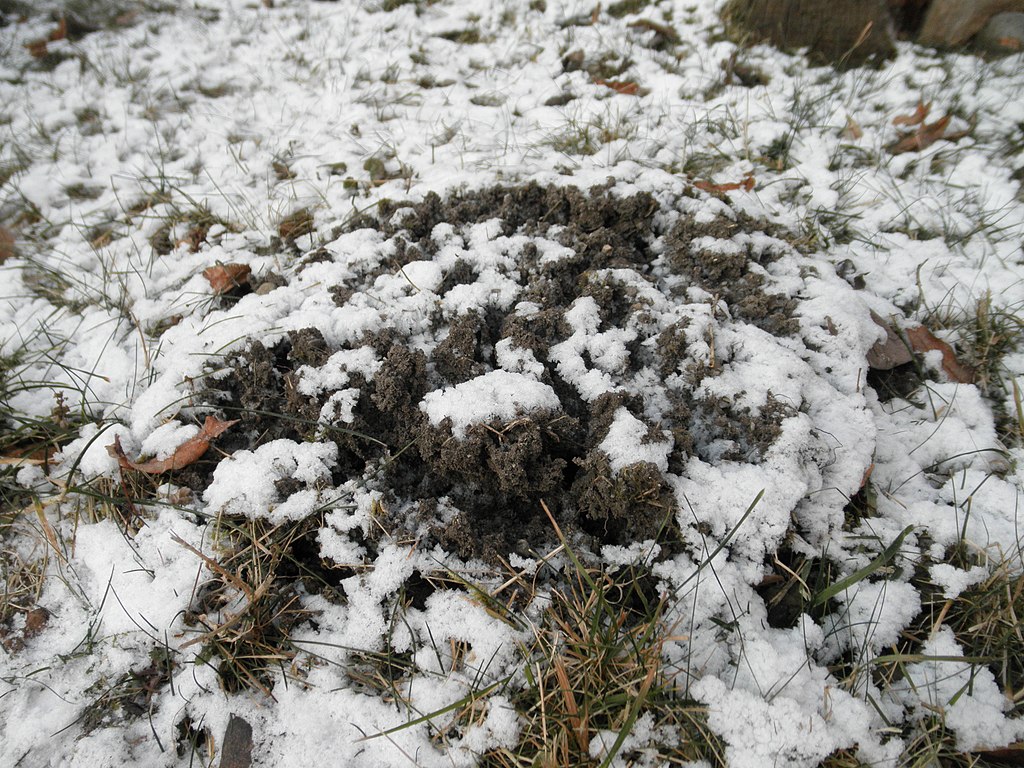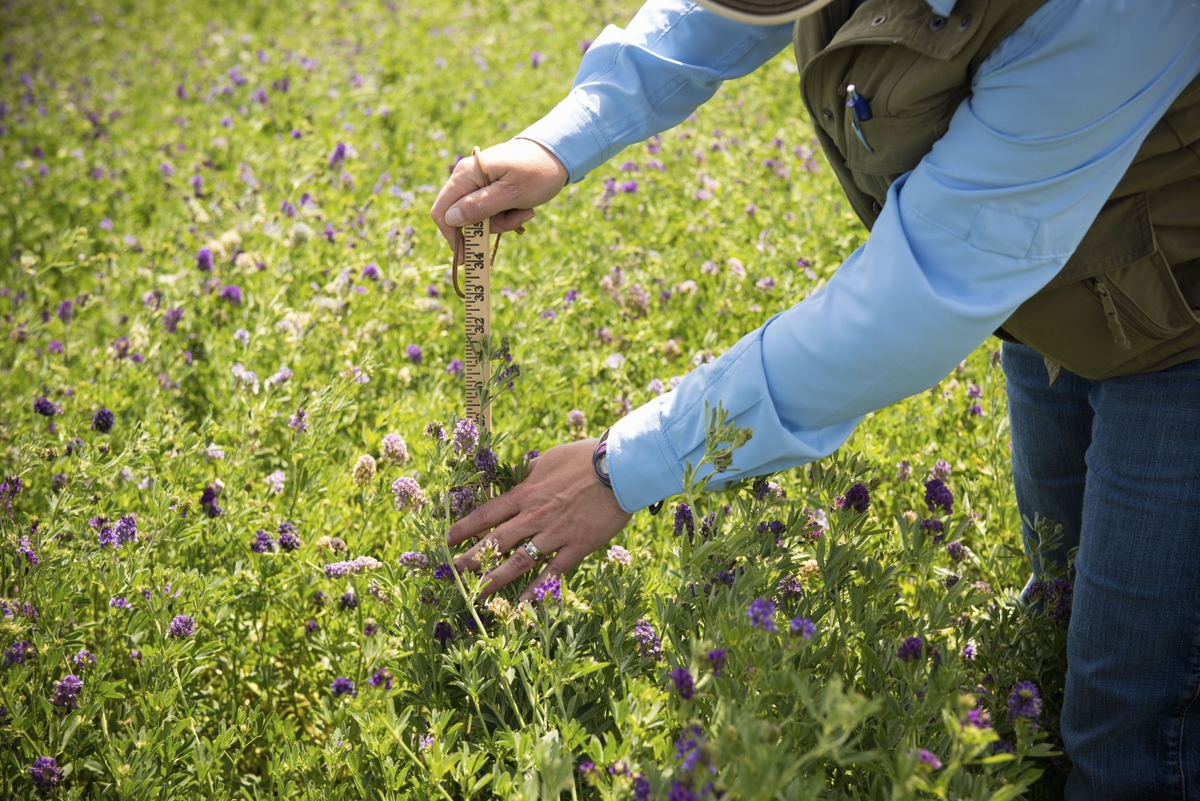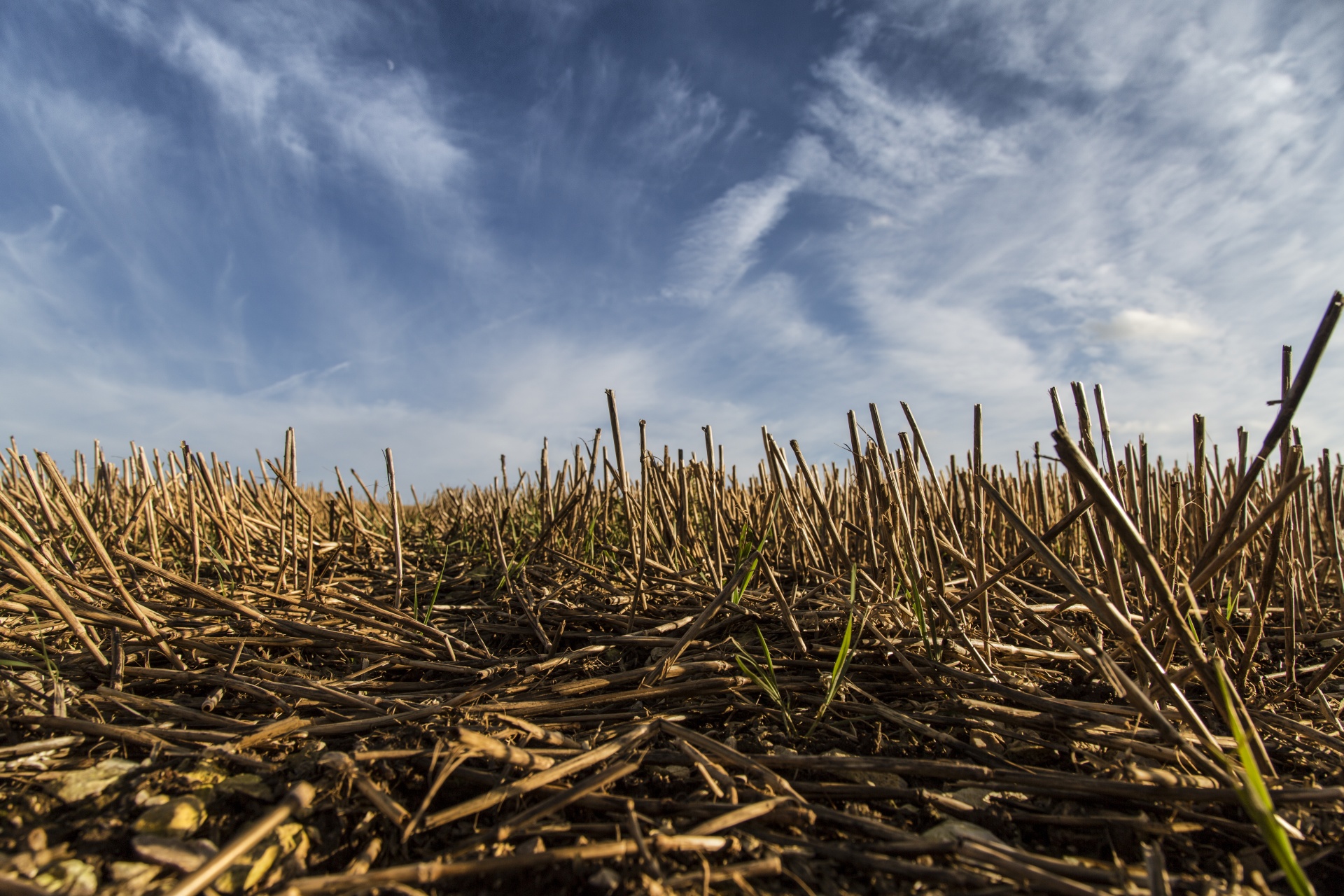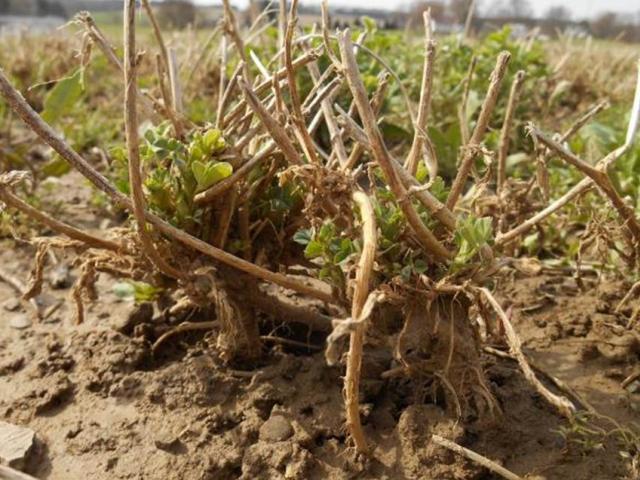Photo Credit: Ohio State University Agronomic Crops Network
Farmers in the Midwest are familiar with the wondrous freeze/thaw cycle in late winter or early spring and the resulting frost heave that breaks up roads and fields. For those growing alfalfa, it’s also essential to be familiar with another associated condition: alfalfa heave.
But what is alfalfa heaving, and why is it important to understand?
Alfalfa heaving occurs when repeated soil expansion and contraction from freezing and thawing pushes plants out of the soil. It can cause taproot breakage and damage to the crown and roots due to exposure. When severe enough, alfalfa heaving can make a field unproductive.
Why is it a Problem?
There are four ways heaved alfalfa plants are damaged when lifted from the soil.
- Roots are mechanically damaged by the lifting process.
- Roots and crowns are dried out when exposed to air.
- Exposed crowns and roots are injured by cold air temperatures.
- Lifted plants are cut off below the crown when harvested.
The stand is reduced to varying degrees depending on the extent of the damage.
One of the biggest problems is taproots can break as plants are forced out of the ground, cutting off the movement of nutrients and water from the plant’s roots to the crown. Damaged plants will likely green up in the spring and survive for a bit but succumb when the weather warms and the soil dries. Therefore, at first, you’ll think the field is unaffected, only to be surprised down the road when it dies.
How long the plant survives after heaving damage depends on its location.
- Breakage 3-4” below the soil results in greenup only.
- Breakage 6-8” below the soil surface results in sufficient first crop growth.
- Breakage 8-12” below the soil results in crop growth until the first significant dry spell.
The second and third problems arise because the roots and crown are no longer protected and insulated by the soil. When exposed to cold, drying temperatures, they suffer winter injury or desiccation.
Lastly, plants lifted from the ground are at greater risk of equipment damage, especially when you go to harvest the stand. If the cutter bar on the haybine is set too low, it will chop plants off below the crown instead of above, and the plants cannot regrow for future cuttings.
Field Conditions Prone to Alfalfa Heave
Unfortunately, some field conditions put your stand at a higher risk of heaving. These conditions increase the susceptibility of frost heave in the spring, which is what pushes the plants out of the ground.
- Heavy clay soils that generate very high heaving pressure.
- High soil moisture levels, especially saturated fields going into winter. More moisture leads to increased frost heave.
- Older alfalfa stands with larger crowns and more prominent, longer taproots.
- Fields without cover or insulating residue during winter.
- Straight alfalfa versus mixed stands of alfalfa and grass(es). The fibrous root system of grasses minimizes frost heave.
 Photo Credit: Wikimedia Commons
Photo Credit: Wikimedia Commons
Assessing Your Stand for Damage
When you observe heaving, you need to look at the field as a whole as well as individual plants to determine the severity of the damage. You’ll be able to measure how much plants have heaved from the soil but may need to dig plants to determine if and where the taproot is broken.
 Photo Credit: rawpixel
Photo Credit: rawpixel
Fields are classified as having significant heaving if plants have been pushed more than 1.5” out of the soil. These fields typically have broken taproots and are highly susceptible to damage from equipment during harvesting. They will most likely need to be transitioned immediately into another crop for the upcoming growing season.
Moderate heaving is when plants are pushed one inch or less out of the soil. These fields will likely take longer to green up, and you should harvest plants later than usual. When harvesting, raise the cutter bar to sufficiently clear the crowns and avoid damage. Some settling may occur through the season, and if reseated, the stands may survive until next year.
Note: Heaving height is the distance from the soil surface to the top of the alfalfa’s crown.
How Much Damage Can a Field Sustain to Remain Viable?
Ideally, you want to see 55 or more alfalfa stems per square foot to ensure maximum yield potential. At a minimum, the stand needs at least 40 plant stems per square foot of soil to remain economically viable.
Managing Fields with Alfalfa Heave
First and foremost, do not go over the soil with a roller or cultipacker to try and push the alfalfa plants back into the ground. This practice can cause more damage to the taproots than the heaving alone. As mentioned above, wait and harvest later, when about 25% of the plants are in bloom, and raise the cutting height above the raised crowns.
Since alfalfa heave occurs early in the season, it gives you time to establish a plan, ensuring adequate forage for the year. You have options depending upon its severity.
- If the heaving is minimal and confined to patches, you can renovate the stand by reseeding alfalfa in the affected areas.
- If you have moderate heaving, you’ll likely be able to maintain the field for at least a year. You may see a delayed green up which will require a delayed harvest. An option to increase legume yield for this season is to overseed with red clover, crimson clover, berseem clover, or even field or forage peas. A mixture of legumes and grass is also a good option. When the alfalfa stand succumbs to the heave, you can replant it as necessary.
- If your stand has severe heaving and needs to be killed, but you need additional forage, consider sudangrass. Both Sudangrass and Sudangrass BMR varieties can be planted and harvested within 60 days, followed by subsequent cuttings every 30 days in optimal growing conditions. Other cool-season grass and grain options include barley, oats, triticale, and Italian ryegrass.
Remember, when overseeding another grass, grain, or legume into your existing stand, the newly-seeded area often needs a minimum of 60 days after planting to establish. Once established, you can then harvest with little risk.
How to Reduce Alfalfa Heaving
The best way to prevent stand loss from heaving is to minimize the conditions that increase an alfalfa field’s susceptibility. Some of these conditions are easier to combat than others, so starting with the easiest ones may be helpful.
The most practical method for reducing heave is to leave plant residue or approximately 6” of alfalfa stubble on the soil in the fall. This material helps insulate the ground through the winter, decreasing the freeze/thaw potential.
 Photo Credit: PublicDomainPictures.net
Photo Credit: PublicDomainPictures.net
Mixing grasses into your alfalfa stand has been shown to reduce the heaving of the alfalfa, but it doesn’t eliminate it. If this is something you’re considering, this time of year is perfect for frost seeding. We also offer easy tips for success.
Changing the soil texture isn't feasible if you’re farming on heavy clay; instead, you can enhance drainage by tiling the field.
FAQ
- Are some varieties of alfalfa more prone to heaving?
- Research doesn’t show that genetic variation impacts whether a field experiences increased or decreased heaving. Not even with “fibrous rooted” types. Heaving is dependent on soil conditions and the stand’s age.
- Can alfalfa fields remain productive after heaving?
- An alfalfa stand can remain productive if the damage is minor and the taproots are unaffected. In most cases, this is when heaving is under 1.5”. When more significant, the chances the taproot is broken increases significantly.
Need Help Reseeding?
If you’re dealing with alfalfa heave and need to reseed, Deer Creek Seed has high-quality alfalfa seeds and plenty of helpful resources, including articles on:
How to Select the Right Variety of Alfalfa
What is Frost Seeding & How Can it Help My Farm?
Easy and Effective Tips for Successful Frost Seeding
For specific questions on seeding rates, fertility issues, planting methods and times, or other agronomic topics, contact a Deer Creek Seed staff agronomist for assistance.
Additional Resources
- Field Crop News talks more in-depth about moderate to severe alfalfa heaving and recommendations for field management.
- If you have any questions on alfalfa management, this guide by ASA, CSSA, and SSSA has the information you need.
- Rory Lewandowski, an OSU Extension Agriculture & Natural Resources Educator, discusses why you shouldn’t overseed alfalfa back into a damaged stand over at the Akron Beacon Journal.
- Deciding whether or not your alfalfa stand is profitable enough to keep is tough. UW Cooperative Extension has an assessment guide to help.
- For more suggested action plans following alfalfa heaving, check out Table 1 in this article by Iowa State University Extention and Outreach.



